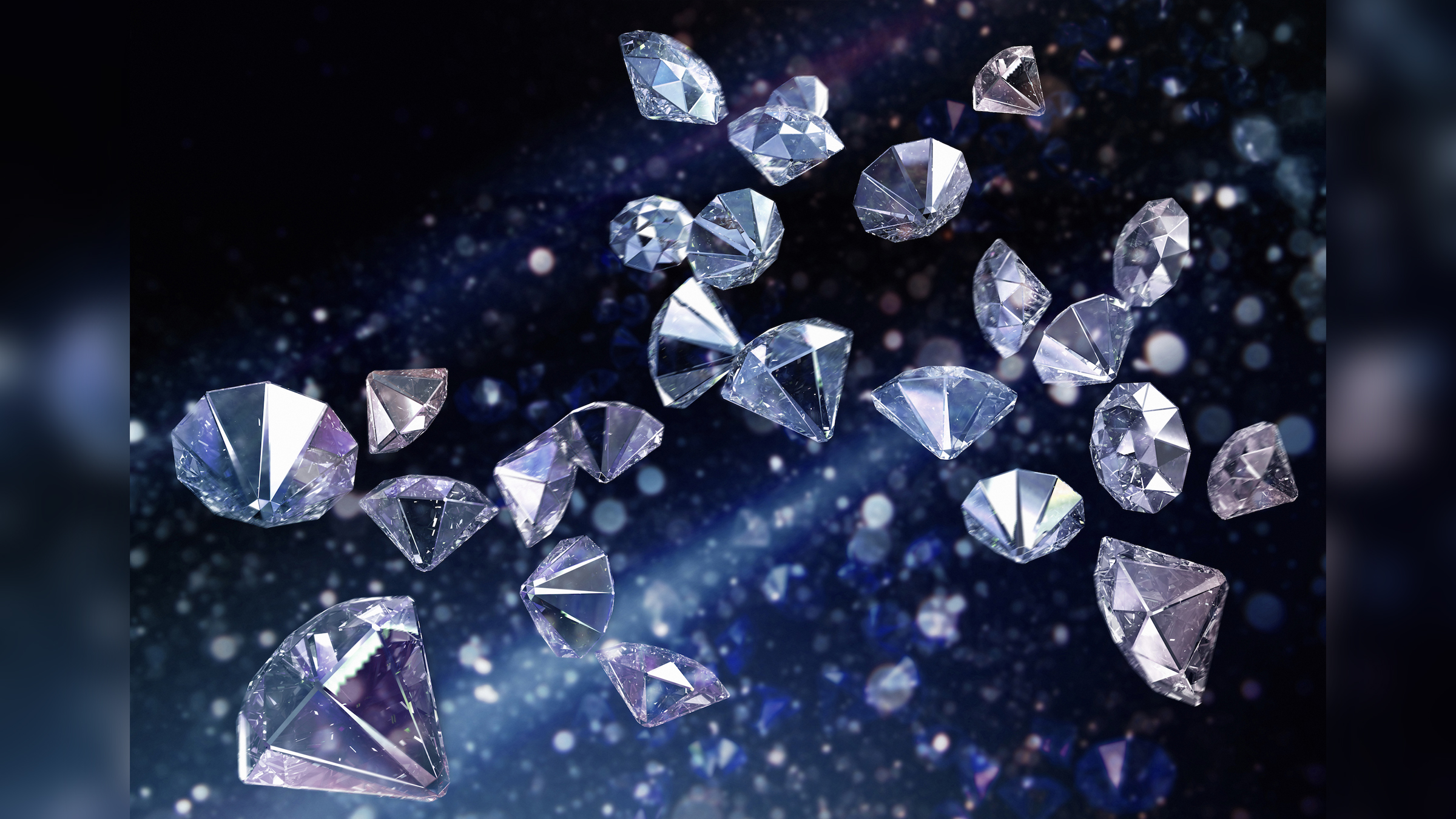Diamonds need an electric zap to crystallize deep inside Earth
Without voltage, diamonds don't form.

Before diamonds can begin growing deep underground in Earth's mantle, they need a little zap from an electric field, a new study finds.
In lab-based experiments, scientists mimicked conditions in the mantle — the layer just beneath Earth's crust — and found that diamonds grew only when exposed to an electric field, even a weak one of about 1 volt, according to the study, which was published online Jan. 20 in the journal Science Advances.
"Our results clearly show that electric fields should be considered as an important additional factor that influences the crystallization of diamonds," study lead researcher Yuri Palyanov, a diamond specialist at the V.S. Sobolev Institute of Geology and Mineralogy of the Siberian Branch of the Russian Academy of Sciences, and at Novosibirsk State University, said in a statement.
Incredible Earth: $22.99 at Magazines Direct
The planet we live on is a remarkable place. But have you ever wondered how or why these things occur? How the Earth was made? How we predict the weather? How fossils form? What causes earthquakes or which animals glow in the dark? "Incredible Earth" reveals answers to these questions and more on a thrilling journey through everything you need to know about our world — and with gorgeous photography and insightful diagrams along the way!
Related: Photos: Dazzling minerals and gems
Diamonds are made of carbon atoms aligned in a particular crystal structure. They form more than 90 miles (150 kilometers) under Earth's surface, where pressures reach several gigapascals and temperatures can soar upward of 2,732 degrees Fahrenheit (1,500 degrees Celsius). But many factors behind the "birth" of this gem — prized for its polished beauty and extreme hardness — are a mystery; so a team of Russian and German scientists looked at one factor in particular: underground electric fields.
The researchers gathered the starting ingredients needed to make a diamond — carbonate and carbonate-silicate powders that are similar to carbonate-rich melts abundant in the mantle. They put these powders in an artificial mantle in their lab and subjected them to pressures of up to 7.5 gigapascals and temperatures of up to 2,912 F (1,600 C), and electrode-powered electric fields ranging from 0.4 to 1 volt. After varying periods lasting up to 40 hours, diamonds (and their softer carbon-based cousin, graphite) formed, but only when the researchers set up an electric field of about 1 volt — which is weaker than most household batteries.
Moreover, the diamonds and graphite formed only at the cathode, or the negative part of the electric field. This spot provides electrons to jumpstart a chemical process — mainly, so that certain carbon-oxygen compounds in the carbonates can undergo a series of reactions to become carbon dioxide and, eventually, the carbon atoms that can form a diamond.
Sign up for the Live Science daily newsletter now
Get the world’s most fascinating discoveries delivered straight to your inbox.
The synthetic diamonds were small, with diameters no larger than 0.007 inches (200 micrometers, or one-fifth of a millimeter), but they were surprisingly similar to natural diamonds — both have an octahedral shape and tiny amounts of other elements and compounds, including a relatively high nitrogen content and silicate-carbonate inclusions, also known as diamond "birthmarks" or imperfections, the researchers said.
These experiments suggest that local electrical fields play a pivotal role in diamond formation in Earth's mantle, the researchers said. This local voltage is likely created by rock melts and fluids in the mantle that have high electrical conductivity, but it's unclear how strong these electrical fields are, Chemistry World reported.
"Our approach is of interest for the development of new methods for producing diamonds and other carbon materials with special properties," Palyanov said in another statement.
Originally published on Live Science.

Laura is the archaeology and Life's Little Mysteries editor at Live Science. She also reports on general science, including paleontology. Her work has appeared in The New York Times, Scholastic, Popular Science and Spectrum, a site on autism research. She has won multiple awards from the Society of Professional Journalists and the Washington Newspaper Publishers Association for her reporting at a weekly newspaper near Seattle. Laura holds a bachelor's degree in English literature and psychology from Washington University in St. Louis and a master's degree in science writing from NYU.











